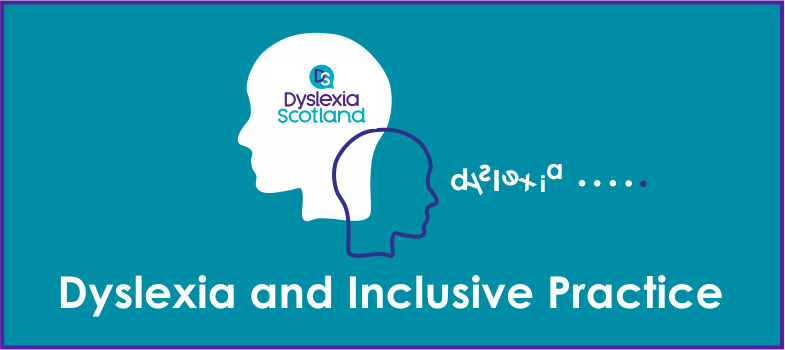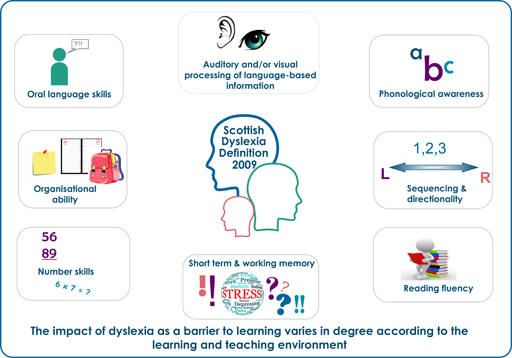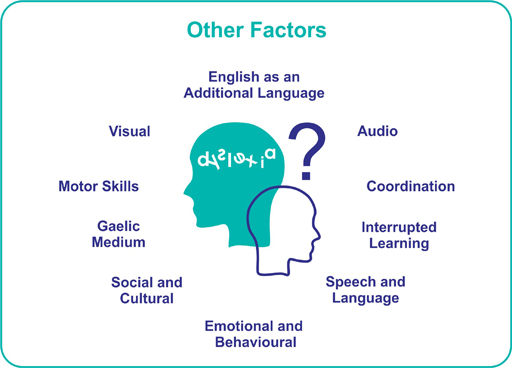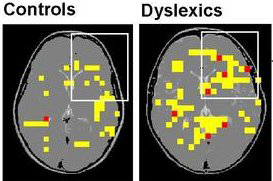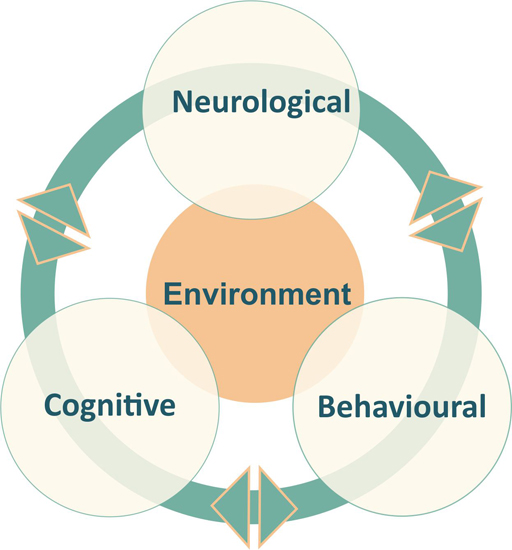2.1. What is dyslexia?
Module 1, Section 2 Recap
Module 1 highlighted the 2009 Scottish Government working definition of dyslexia [Tip: hold Ctrl and click a link to open it in a new tab. (Hide tip)] that was developed and agreed by the Scottish Government, Dyslexia Scotland and the Cross-Party Group on Dyslexia in the Scottish Parliament
Historical background
In 1877, Adolph Kussmaul, a German neurologist, observed characteristics of reading difficulty and described them as ‘word blindness’.
Since around the late 1880s the term ‘dyslexia’ was introduced by a German ophthalmologist, Rudolf Berliner, after he observed adults having difficulties with the written word. Both scientists highlighted the link between individuals’ difficulties with reading and visual difficulties but recognised that those difficulties did not represent the individual’s cognitive ability. Berliner developed the term ‘dyslexia’ from the Greek words.
dys = difficult, hard - Greek - δυσ (dus)
lexia = reading, word, speech - λέξις (lexis)
Dyslexia definition and identification debate
Dyslexia has been a focus of debate spanning several decades. There is a range of definitions of dyslexia available internationally reflecting the different perspectives and foci that make up the debate. For example, some may view dyslexia within the context of reading and spelling and consider dyslexia to be a ‘reading disability’ – using a medical model. Definitions are important because professional bodies and academic research can influence the direction of a definition and hence the approaches and processes which are recommended within education systems.
Module 3 will explore the area of identification in greater detail.
Select here for further reading and research on this area in the Professional Development section of the Addressing Dyslexia Toolkit.
As the Scottish working definition highlights, dyslexia exists in all cultures and across the range of abilities and socio-economic backgrounds. It is not linked specifically to either low or high cognitive ability. This means that learners of all cognitive ability levels can be dyslexic. This is what differentiates it from other discrepancy models of dyslexia. When exploring if learners may have dyslexia it is important that consideration is given to a range of factors which may be creating the child’s or learner’s barriers to learning. The broad Scottish working definition of dyslexia aims to provide guidance for educational practitioners, learners, parents/carers and others that dyslexia does not only occur because of literacy difficulties, as highlighted in Figure 11. It is important, therefore, to consider the range of factors that may be contributing to the child or learner’s barriers to learning.
Advances in medical science have enabled the identification of dyslexia to be understood in greater detail. Neuroscience research through brain imaging has identified diversity in the brain for adolescents both with, and without dyslexia. The body of research undertaken over the past few decades by a range of academic and medical researchers, has led to an acceptance that when identified appropriately, dyslexia is a recognised learning difference and is the result of a neurological difference. It is accepted that it is not a reflection of a learner’s level of intelligence or cognitive ability. The impact of dyslexia as a barrier to learning varies in degree according to the learning and teaching environment.
Frith, in Reid and Wearmouth (2002) says that dyslexia can be defined as neuro-developmental in nature, with a biological origin and behavioural signs that extend far beyond problems with written language.
In 1999, the American Journal of Neuroradiology, provided evidence that dyslexia is neurological in nature. The interdisciplinary team of University of Washington researchers also showed that dyslexic children use nearly five times the brain area as children who are not dyslexic while performing a simple language task.
Although the images above were taken in 1999, they highlight very clearly in yellow the differences between areas of the brain which are activated while performing simple language tasks in yellow. Red indicates areas activated in two or more children. Pic: Todd Richards, University of Washington.
“The dyslexics were using 4.6 times as much area of the brain to do the same language task as the controls," said Todd Richards, co-leader of the study. "This means their brains were working a lot harder and using more energy than the normal children". "People often don't see how hard it is for dyslexic children to do a task that others do so effortlessly," added Virginia Berninger, a professor of educational psychology.
Morton & Frith (1993, 1995) developed a neutral framework for the causal modelling of developmental disorders and applied this modelling to dyslexia. The research highlights that dyslexia can be split into 3 main research areas, all of which inter-link and influence one another.
Neurological - Brain structure and genetic factors
Cognitive - How people learn
Behavioural - How people behave and their reactions to this learning difference
These are influenced by environmental interactions at all levels, which include home, nursery, schools and activities. This means that the behaviour of a child with dyslexia would change with time and in different contexts.
2. Understanding dyslexia
